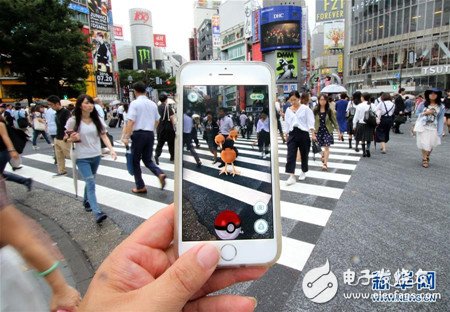Recently, PokemonGo, which has been popular all over the world, has not only aroused the interest of players in catching elves. This mobile game has occupied the headlines of major media and made more people realize "Augmented Reality (hereinafter referred to as 'Augmented Reality'). The word AR')". However, many people don't understand it. In the context of the concept of "Virtual Reality ("VR"), we may wish to compare the similarities and differences between the "brothers". Data map: On the streets of Tokyo, Japan, a player is playing a mobile game called PokemonGO. (Source: Xinhuanet) What is "AR" and "VR" According to China Net, "AR" is a technology that calculates the position and angle of camera images in real time and adds corresponding images, videos, 3D models, and so on. The Global Times introduced what is called "VR": it is an immersive interactive environment based on computable information. Specifically, it adopts modern high-tech means with computer technology as the core, and generates a virtual environment of realistic visual, auditory and tactile integration within a certain scope. Users use the necessary equipment in a natural way and in a virtual environment. The objects interact and interact with each other to produce feelings and experiences that are in the real world. The main difference between "AR" and "VR" The reason why “AR†is “enhanced†is because it is an experience that superimposes virtual information in the real world and enriches our external perception. "Science and Technology Daily" once described it as: "Imaging the physical information (visual information, sound, taste, touch, etc.) that was difficult to experience in a certain time and space in the real world, through computer and other scientific technologies, simulation After superimposition, the virtual information is applied to the real world, perceived by human senses, to achieve a sensory experience that transcends reality." “VR†is more like a full service. According to the Beijing Evening News, VR is a virtual world that uses computer simulation to generate a three-dimensional space, providing users with simulations of visual, auditory, tactile and other senses, allowing users to fully participate and fully immerse themselves in the virtual world created by numbers. . AR focuses on the seamless connection between reality and virtuality. It is aimed at users and actively connects with users. VR focuses on creating an immersive virtual experience for users. It responds to user interactions and requests user participation. If the reality and the virtual are compared to two adjacent rooms, then the AR is like a door connecting two rooms, and the VR is like the feeling that the user is standing in the "virtual" room. Their respective application prospects In terms of medical care, AR can help doctors to call up a medical history more quickly based on the patient's physical condition, so that patients can be diagnosed in a shorter period of time. In terms of architecture, engineers have the opportunity to envision the construction process through AR and get more intuitive feedback. AR can also be applied in business, and it is sure to add a lot of fun and convenience to everyone's shopping experience. In addition, AR will also play a major role in more fields, such as military, design, logistics and so on. VR is now developing a wide range of applications, such as medicine, entertainment, military aerospace, interior design, real estate development, industrial simulation, road and bridge, automotive simulation, rail transit, energy, biomechanics, and rehabilitation training. Its application effect is similar to that of AR. The purpose is to achieve people's specific goals by establishing the connection between reality and digital virtual world. The above introduction does not say that these two "brothers" are more "powerful". In fact, they are all "squatters" in modern technology, playing an important role in different aspects of different or the same field. PZT Piezoelectric Discs & Rods
Yuhai company develop and produce of various
discs sizes, electrode and metallisation configurations. Disc elements is
fabricated from various piezoelectric material formulations to respond to the
ever growing challenges on new applications.
Features
Electrode configurations
Full range electrode
Piezoelectric Disc,Pzt Disc,Pzt Piezoelectric Discs,Piezo Electric Disc Zibo Yuhai Electronic Ceramic Co., Ltd. , https://www.yhpiezo.com
Sizes from 3mm up to 200mm
Thickness from 0.1mm up to 25mm
Electrode design on request
Choice of metallisation (Silver, Nickel, Gold and others on request)
Thickness frequency tuning available on request
Wide choice of PZT formulations
Applications include
Ÿ Distance sensors
Ÿ Liquid and Gas flow sensors
Ÿ Micro-pump actuators
Ÿ Liquid level sensors
Ÿ Ultrasonic transducer
Electrode with boder
Wrap around electrode (Square, circle or other on request)
Annular wrap around electrode